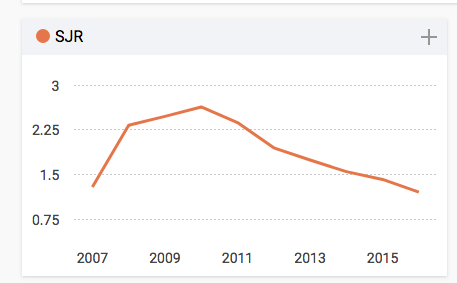While PlosOne ostensibly publishes papers from all fields of science, it is heavily weighted towards biology and medicine. Journals in these fields have higher impact factors because (a) they have more references per paper (I'd hypothesise that this might also be related to the use of numeric citations rather than apa/harvard style), and (b) they have shorter reference half-lives (i.e., papers accrue a greater proportion of their total references in the two to three years post-publication period that is used to calculate impact factor).
These are purely idiosyncratic factors that influence the average impact factor of journals in a particular field.
- If you come from a field in biology or medicine, you might see an impact factor of 3 as perhaps average or a bit above average.
- In psychology where I come from, some of the best journals in a given subdiscipline have impact factors in the 3 to 6 range.
- In other fields like mathematics or the humanities, an impact factor of 3.0 would be perceived to be even greater.
The main point is that impact factors are more highly correlated with subjective evaluations of quality and importance when such comparisons are performed for journals within a discipline.
In addition, even relative to fields like medicine and biology, the impact factor for PlosOne is respectable. Articles are clearly being cited quite a bit in these areas. You can see more information by going to scimago or Web of Science Citation Reports.
If you want to compare journals in a more discipline-neutral way, you might want to look at the SJR. It uses an iterative weighting procedure which I believe weights references coming from more prestigious journals more highly and allows each article to only give away a finite amount of prestige. So for example, an article with many citations can only give fractional prestige. This allows disciplines with more references per paper to count a little less.
For example, on that metric, PlosOne has an SJR of 1.3.
In contrast, a psychology journal I know which has a similar impact factor to PlosOne had an SJR or 1.8, presumably adjusting for the different citation practices and relative prestige of source publications. You might want to look up the SJR of journals in your field to compare.
As an aside, metrics of impact at plosone have declined substantially in recent years (compare 2010 to 2016); albeit, it is still a first quartile ranked journal.
Two possible explanations: (1) as a multidisciplinary journal, the mix of articles the proportion of articles coming from disciplines with high numbers of citations has declined, or (2) the average quality/impact of the research has declined.
 https://www.scimagojr.com/journalsearch.php?q=10600153309&tip=sid&clean=0
https://www.scimagojr.com/journalsearch.php?q=10600153309&tip=sid&clean=0

